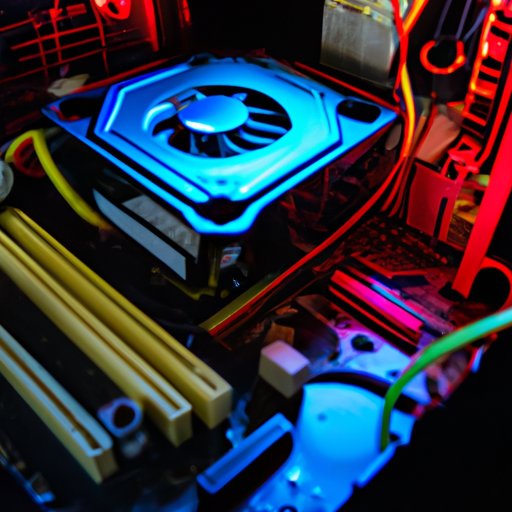Introduction
It’s a frustrating experience when you press the power button on your computer and nothing happens. It can be difficult to diagnose and fix the problem if you don’t know what to look for. In this article, we’ll cover the basic troubleshooting steps you should take when your computer won’t turn on, as well as some potential causes and fixes.
Troubleshooting Tips for When Your Computer Won’t Turn On
When your computer won’t turn on, the first thing to do is check the power source. Make sure the power cable is securely connected to the wall outlet or surge protector, and that the cable is in good condition. If you’re using a laptop, make sure the battery is properly installed and fully charged.
Next, check the monitor or screen. If the display is blank, the issue could be with the monitor itself or the connection between the monitor and the computer. Try connecting the monitor to another device, such as a laptop, to see if it works. Then, check all the cables between the monitor and the computer, making sure they are securely connected.
If the power source and monitor are both working correctly, then it’s time to run a system diagnostic. This will help you identify any hardware or software issues that may be causing the problem. You can use the built-in diagnostics tools on your computer, or download a third-party tool such as PC Doctor or System Mechanic.
How to Diagnose and Fix a Computer That Won’t Boot
If the system diagnostic doesn’t reveal any problems, then you’ll need to take a closer look at the components inside the computer. The most likely cause is a problem with the BIOS settings. To access the BIOS, restart your computer and press the appropriate key during the boot process (usually F2 or Del). Once you’ve accessed the BIOS, check the settings and make sure everything is correct.
If the BIOS settings are correct, then try removing any external devices, such as USB drives, printers, and scanners. These can sometimes interfere with the boot process. If that doesn’t work, then you may need to reset the CMOS battery. This is a small battery located on the motherboard that stores certain configuration settings. To reset it, unplug the power cord from the back of the computer, remove the battery, and wait for 30 seconds before replacing it.
If none of these steps work, then you may have a more serious issue, such as a faulty motherboard. Replacing the motherboard is a fairly complicated process, and should only be done by experienced technicians.
Common Reasons Why Your Computer Might Not Be Turning On
There are several potential causes of computer startup issues. One of the most common is a faulty power supply. If the power supply isn’t delivering enough power, then the computer won’t be able to start up. Overheating can also be an issue, as it can cause components to fail. If your computer is overheating, then you’ll need to clean the fan and heat sink and check the voltage regulator.
Another potential cause is bad memory. Memory modules can become corrupted over time, which can prevent your computer from starting up. Finally, hard drive failure can also be a problem. If your hard drive has failed, then your computer won’t be able to boot up.
What to Do When Your Laptop or PC Won’t Start
If you’re having trouble getting your laptop or PC to start, then there are a few things you can try. First, check the battery. Make sure it is properly installed and has enough charge. Next, test the power adapter. If it isn’t providing enough power, then your laptop won’t be able to start up. Finally, if all else fails, you can try reinstalling the operating system.

How to Resolve Power Issues with Your Computer
If your computer isn’t turning on due to a power issue, then there are a few steps you can take to try and resolve the problem. First, check the power button. Make sure it is firmly pressed and that the connections are secure. Next, clean the fan and heat sink to make sure they aren’t clogged with dust. Then, check the voltage regulator to make sure it is working correctly.
Finally, if none of these steps work, then you may need to replace the power supply. Replacement power supplies can be purchased online or at most electronics stores.
Conclusion
Dealing with a computer that won’t turn on can be a stressful experience. However, with the right knowledge and tools, it is possible to diagnose and fix the problem. This article has explored some common causes of computer startup issues, as well as some troubleshooting tips and fixes.


